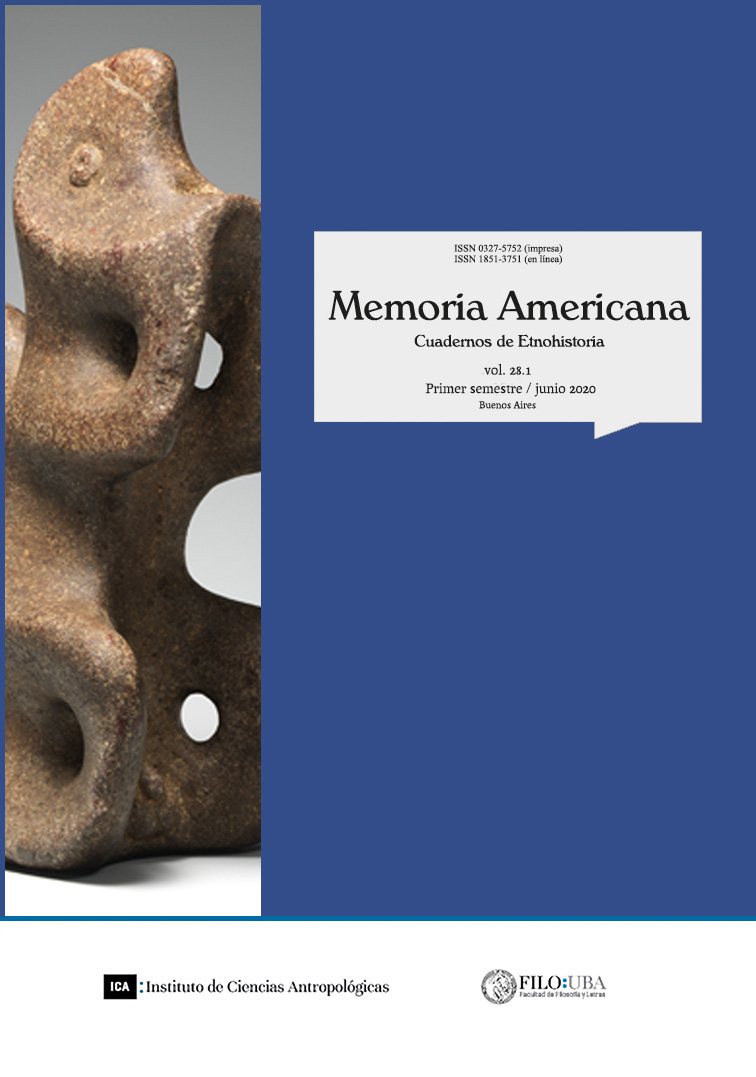The “uses” of Tomás Paniri: scientific, indigenous and state action in the northern Andes of Chile
Abstract
In 1993, the Chilean State recognized the preexistence of diverse ethnic groups in the national territory and suggested specialized policies, since then the Atacameños from Antofagasta Region initiated an organization process which places them, nowadays, as significant actors in the discussions about the administration of the territory and their resources. The combination between elements of the expert -or scientific- knowledge and the traditional -or ethnic- knowledge has an important role in the strategies developed. This article presents a case study: the use of the figure of Tomás Paniri, an indigenous leader of the 18th century. Throughout the paper three moments are distinguished: first, his creation as historical individual through the documentary discoveries (1970-ad); second, his transformation as symbol of the Atacameño movement (1990-ad) and third, his incorporation to the state narratives of the multicultural. The objective is to show the different types of articulation between the Atacameños, the academic field and the State and also the underlying tensions in which the category of the Atacameño is inscribed.Downloads
Los derechos de autor son cedidos a Memoria Americana. Cuadernos de Etnohistoria, no obstante los autores podrán recuperarlos y reproducir su trabajo en otros medios o formatos previo envío de solicitud al Comité Editorial. En tales casos, deberá citarse a Memoria Americana. Cuadernos de Etnohistoria como primera publicación del trabajo y el mismo queda bajo una licencia Creative Commons CC BY NC SA 3.0 Attribution- Non Commercial -ShareAlike 3.0, la cual provee libre acceso inmediato a sus contenidos pues se rige por el principio según el cual hacer disponible -en forma gratuita- la investigación al público fomenta un mayor intercambio de conocimiento a nivel global.
Los autores deberán remitir el siguiente formulario de cesión de derechos y compromiso de originalidad:
Cesión de derechos y compromiso de originalidad
Al Comité Editorial de Memoria Americana, Cuadernos de Etnohistoria
Por la presente declaro ser el autor del trabajo titulado (nombre del artículo), el mismo es original y propio y no ha sido publicado en ningún formato o soporte con anterioridad.
En caso de ser aceptado para su publicación en Memoria Americana. Cuadernos de Etnohistoria (número/año) cedo los derechos editoriales que me corresponden por el aludido artículo para su publicación en todos los formatos que posea la mencionada revista.
Si quisiera publicar este artículo a través de otro editor o en otro lugar me comprometo a solicitar el correspondiente permiso por escrito al Comité Editorial de Memoria Americana. Cuadernos de Etnohistoria. De ser afirmativa la respuesta del Comité Editorial me comprometo a lo siguiente:
- especificar lugar, editorial y fecha de la primera publicación del artículo en la nueva publicación
- realizar esta republicación sólo luego de transcurridos un año calendario desde la fecha de la presente nota de cesión de derechos
FIRMA
Aclaración











